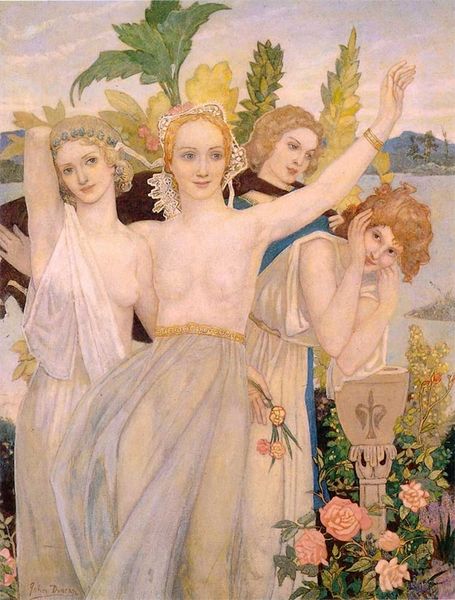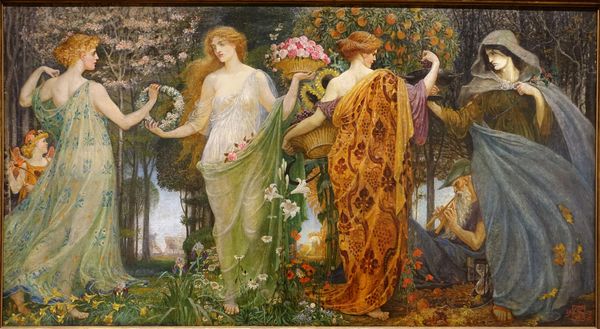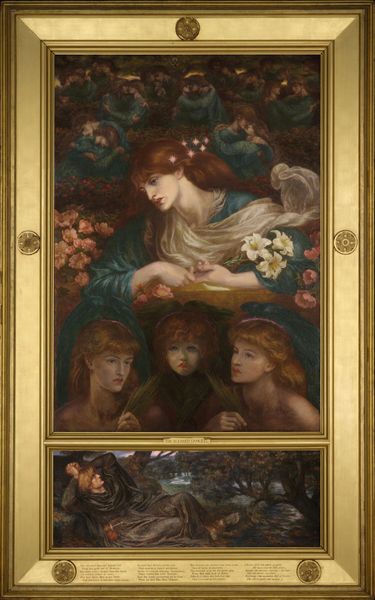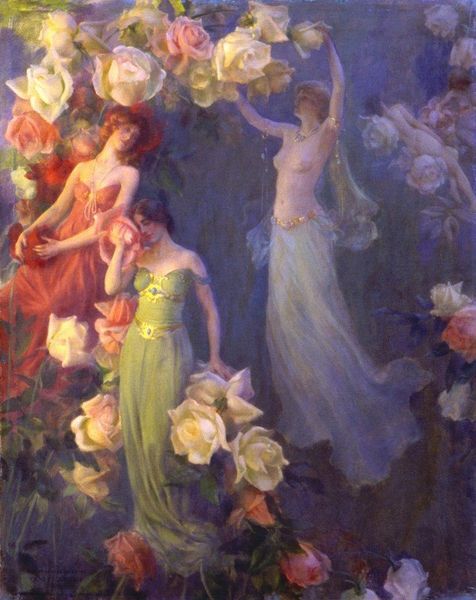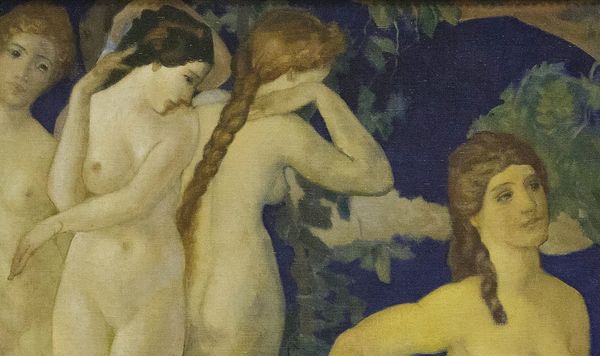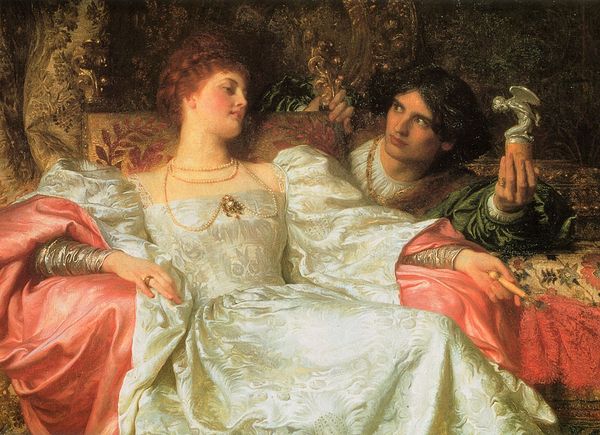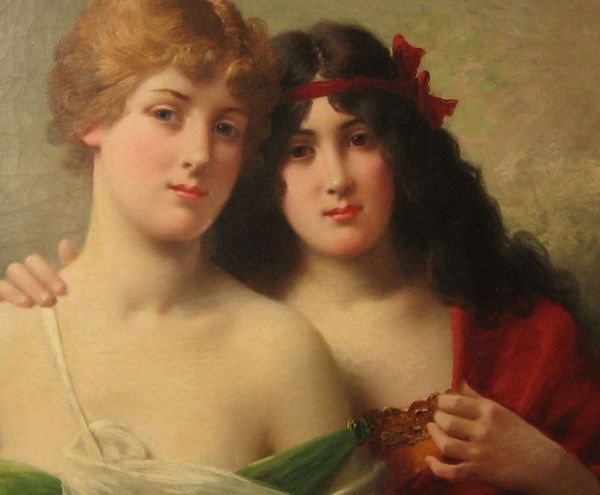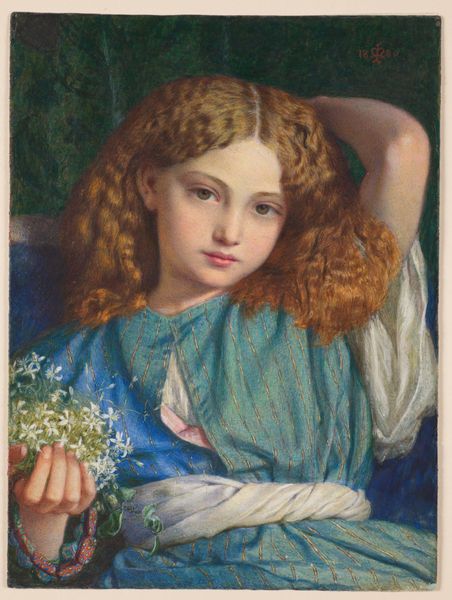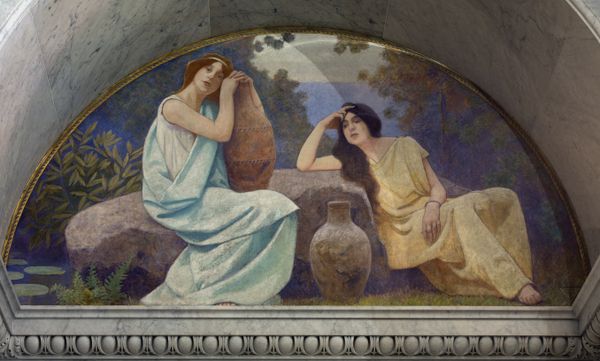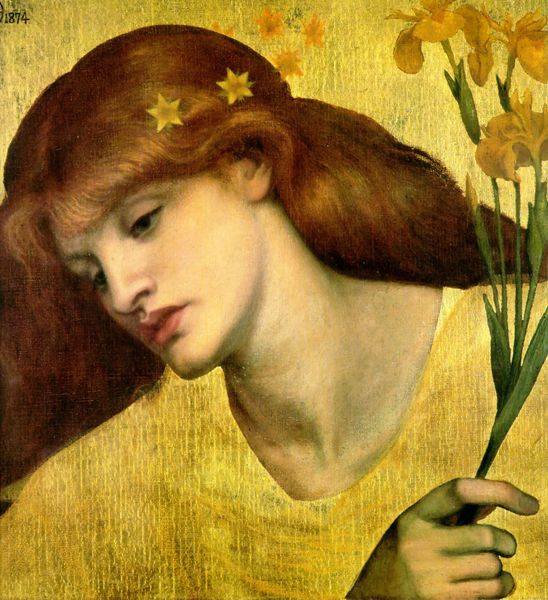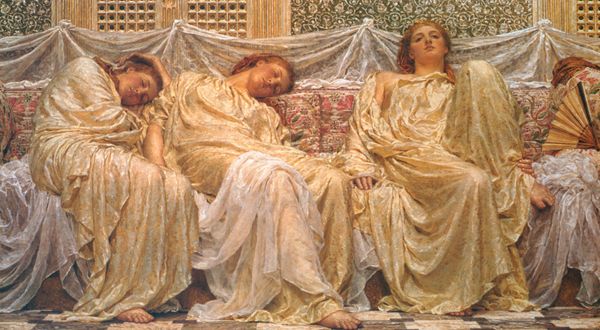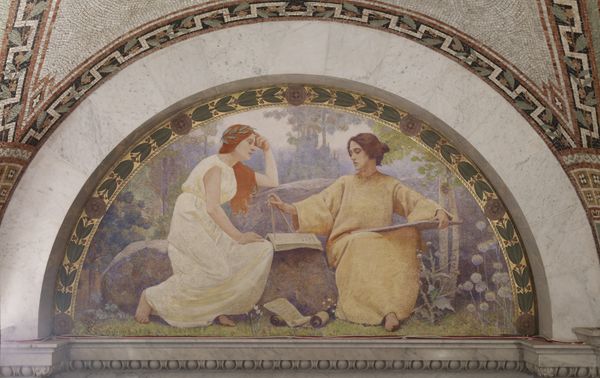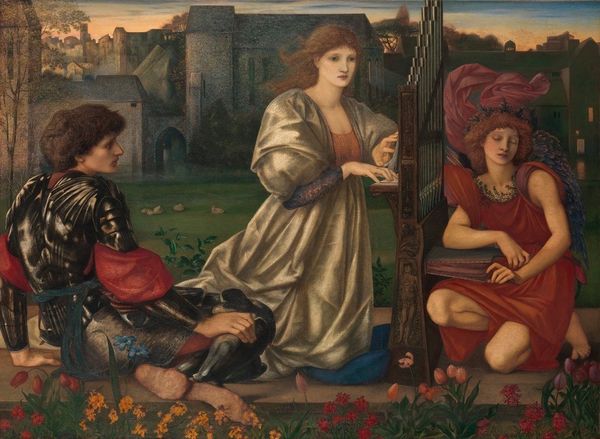
coloured-pencil, gouache, watercolor
#
portrait
#
gouache
#
coloured-pencil
#
water colours
#
gouache
#
figuration
#
watercolor
#
coloured pencil
#
scottish-colorists
#
symbolism
Copyright: Public domain
Curator: So, here we have a detail from John Duncan’s 1907 piece, "Hymn to the Rose," realized with watercolors, gouache, and coloured pencil. The complete artwork features a group of young women surrounding a rose bush. Editor: Wow, there's a wistful feeling here, almost like these women are figures from a Pre-Raphaelite dream sequence. Is it me, or is there something kind of mysterious, even somber, about them despite all those pink roses? Curator: Duncan was deeply involved in the Scottish Celtic Revival. You see his art often referencing Arthurian legends and Celtic symbolism, using stylistic devices he adopted from the Pre-Raphaelites, yes. He very consciously attempted to revive an interest in Scottish culture. Editor: I like that a lot. They almost look like medieval singers or something...The faces are just incredibly serene, like they are lost in thought, as if a beautiful memory is shared between all. It gives me this odd feeling that there's a story, or maybe even a secret, they're guarding. The way they are so still and all look to the rose bush adds another layer. What did the rose represent? Curator: Symbolically, roses can be so many things—love, beauty, secrecy, even death depending on the context. Given Duncan’s leanings, and the period it was produced, its position at the heart of the artwork likely symbolises spiritual love or perhaps a romantic nationalist ideal connected with Scotland's own identity at a time when the culture and national identity were felt to be threatened. The 'hymn' in the title certainly suggests the devotional act of national worship through aesthetic practice, so I believe this is his aim in the image. Editor: Well, whatever it is, it works. Those faded, soft colors he uses just strengthen that air of mystique. It reminds me a little of something you'd find on a tarot card, but also evokes ideas around maidenhood and a time where feminine agency was highly surveilled in British society. It's strangely magnetic. Curator: I agree. It reflects both Duncan's aesthetic preferences but the politics and culture that shaped these artistic and philosophical positions at the beginning of the 20th Century. Editor: There's so much to ponder in it. Curator: Precisely. And much to unpack.
Comments
No comments
Be the first to comment and join the conversation on the ultimate creative platform.
